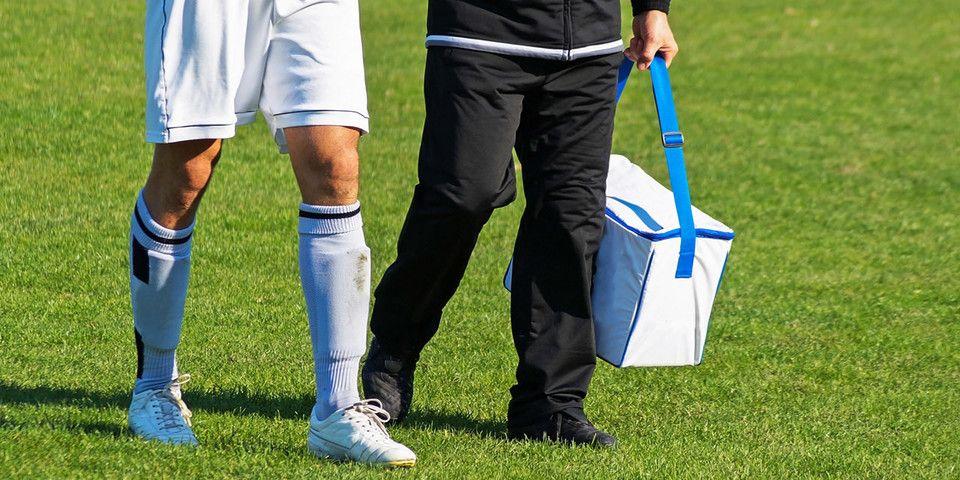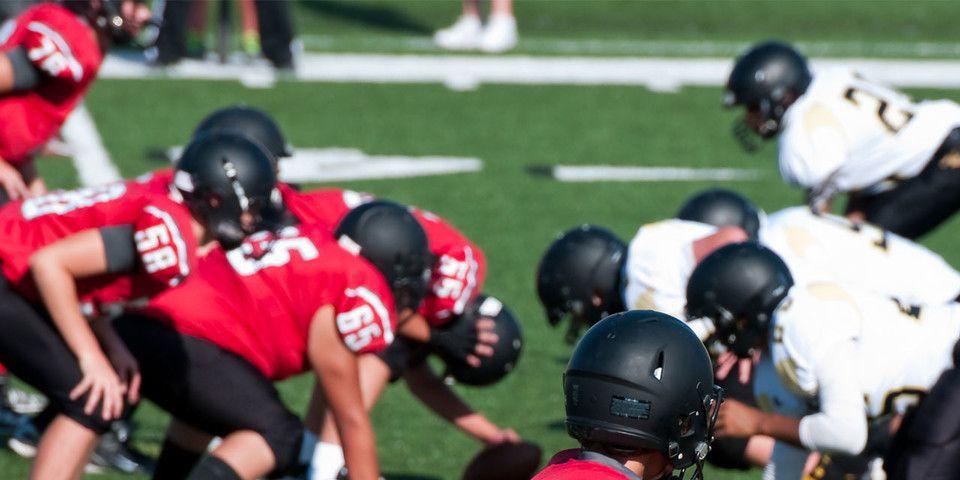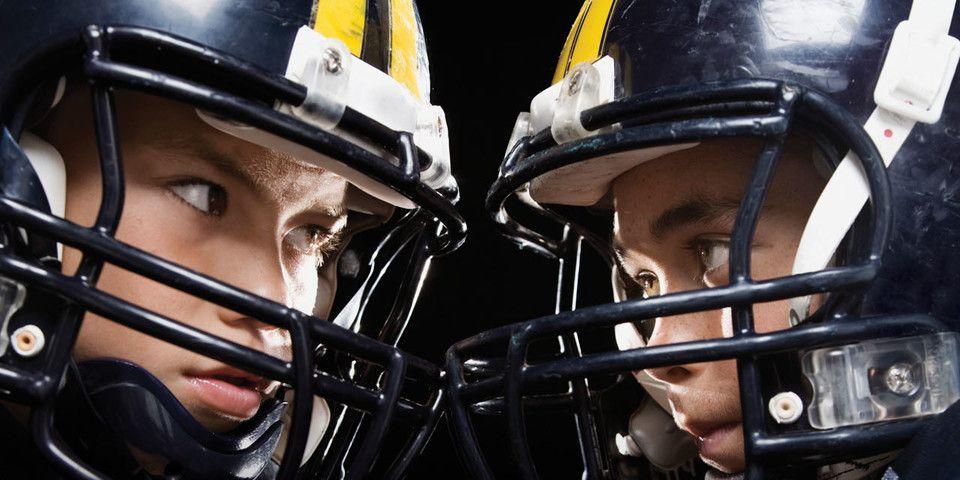Football Injury Prevention
How to prevent being sidelined by a football injury
Whether you’re a player, a friend, a family member, or a fan, there’s one phrase that strikes terror into your heart this time of year: football injury. For many Americans, football is so ingrained in our culture that we often forget the risks associated with this high-impact sport until it’s too late. As orthopaedic doctors, we at Rothman Orthopaedic Institute see sports-related injuries of all kinds. To keep you on the field, and out of the doctor’s office, here are some of the most important football injury prevention tips.
What are the most common football injuries?
As you’re probably aware, concussions have become a major concern for both professional and amateur football players. Even flag football players are at risk for traumatic head injury because of the high intensity involved in the sport. Other common football injuries include those of the knee, such as anterior cruciate ligament rupture and meniscal tears, which can happen while pivoting or being tackled. Football players are also at high risk for shoulder and ankle injuries.
One thing that sets football injuries apart from other athletic injuries is that they acute injuries, resulting from a singular event or impact than overuse injuries that build up over time. These injuries require immediate medical attention. Any player who suspects he has sustained an injury should see the team’s athletic trainer or doctor right away.
What can I do about football injury prevention?
Players, coaches, and families can definitely take steps to help reduce the chances of an injury on the gridiron. Three categories to focus on are equipment, fitness, and wellness.
Equipment
When you think football equipment, the first things you think of are probably helmets and shoulder pads. Dressed in this protective gear, football players look like mythic warriors headed into battle. Pads and helmets provide cushions to protect against fractures, but they don’t prevent all injuries. For instance, helmets cannot protect players from all concussions, and if ill-fitting, can actually contribute to them instead.
This is why properly fitted equipment is so crucial to football injury prevention. Each athlete should be individually measured for a helmet, using a cloth measuring tape like that found in a sewing kit. To get the correct size, measure the circumference of the head about an inch above your eyebrows, and select a helmet of the same measurement. The face pads on the inside should brush your temples as the helmet is put on. Equally important, the chin strap should fit directly under the chin and be securely fastened. You may also choose to wear a mouthguard for extra tooth protection.
We don’t think about them as often, but your shoes are an essential piece of safety equipment for football injury prevention as well. If you’re playing professionally, or in a league, you may be wearing cleats, but for casual players who only go out a few times a year with friends, a good pair of cross trainers might be a better investment.
Shoes need to be checked to make sure they’re the right size and shape for your feet. If one of your feet is bigger than the other, always size your shoes for the bigger foot. You can add padding to make up for any looseness in the other shoe. Having shoes that fit can help prevent knee and ankle injuries. For more information on finding the perfect fit, check out the Hospital for Special Surgery’s article on athletic shoe fitting.
Fitness
One of the best things you can do to prevent injury is to make sure that you’re in peak physical condition. This means continuing appropriate training regimens during the offseason as recommended by your team’s athletic trainer. This also means spending time on strengthening, agility, and cardio exercises.
An important aspect of football injury prevention is not overtraining. The first symptoms of overtraining are called overreaching, during which you feel unusually sore after exercise. The key is to listen to your body. If you’re feeling fatigued, stop. If you’re feeling pain, stop. It’s much easier to recover from overreaching than it is to come back after you’ve pushed yourself past your physical limits. If you’re concerned about your training regimen and the toll it’s taking on your body, talk to an athletic trainer. Additionally, remember you should have at least one day a week when you let your body rest and recuperate.
Warming up your muscles, lungs, and circulatory system with light cardio exercise is crucial to getting your body ready for physical activity, as is stretching. Stretching helps increase range of motion and flexibility while getting the fluids in your tissues moving. This prevents injury and soreness. Similarly, stretching during your cooldown after a game or practice can reduce soreness and prevent future injury. Your coach or trainer can show you the best stretches for you.
If you’re a hobbyist and don’t play often, know your body’s limits. Don’t try to throw long distances, or overestimate your physical abilities. The pros on TV may make that hail mary look easy, but your shoulder likely can’t take the stress. Similarly, if you’re playing flag football, make sure you grab only the flag, and not another player’s clothing when going for a “tackle.” Grabbing clothing can result in broken or dislocated fingers.
Wellness
This should go without saying for any athlete, but general wellness and self-care will go a long way in terms of football injury prevention. Eating the right foods, staying hydrated, getting enough sleep, and reducing overall stress are all important to keeping you healthy and safe on the field.
In addition to these universal wellness tips, casual players should remember that alcohol and football don’t mix. Not only does it to reduce your coordination and slow your reflexes, dehydration from alcohol can make your muscles and tendons less elastic, and more prone to injury. If you’re planning to toss the pigskin around, avoid imbibing too much ahead of time.
Is there any way to eliminate the risk of football injuries?
Unfortunately, there is no way to completely eliminate the risk of football injuries. The nature of the game is that it is dynamic, high impact, and intense. However, following the above tips can help greatly reduce the chances of being injured on the gridiron. If you would like more information about football injury prevention, or to schedule an appointment, contact us today at 1-800-321-9999.
Related Physicians
Related Specialties
Related Conditions
Related Programs
-

Athletic Training- Sport Medicine Outreach
Our Field Athletic Trainers provide direct sports medicine care to youth, high school, college and professional athletes. Rothman AT’s provide athletic training services throughout Southeastern PA to interscholastic high schools, colleges, as well as tournaments and special events.Read More -

Injury Prevention Program
The Injury Prevention Program at the Rothman Orthopaedic Institute is dedicated to the prevention of injuries from athletic participation, particularly youth sports.Read More -

Sports Concussion Program
Concussion care is a special focus of Rothman's sports medicine program. We've developed the most advanced multi-disciplinary evaluation and treatment techniques based on research done by the concussion specialists here at Rothman Orthopaedic Institute.Read More




